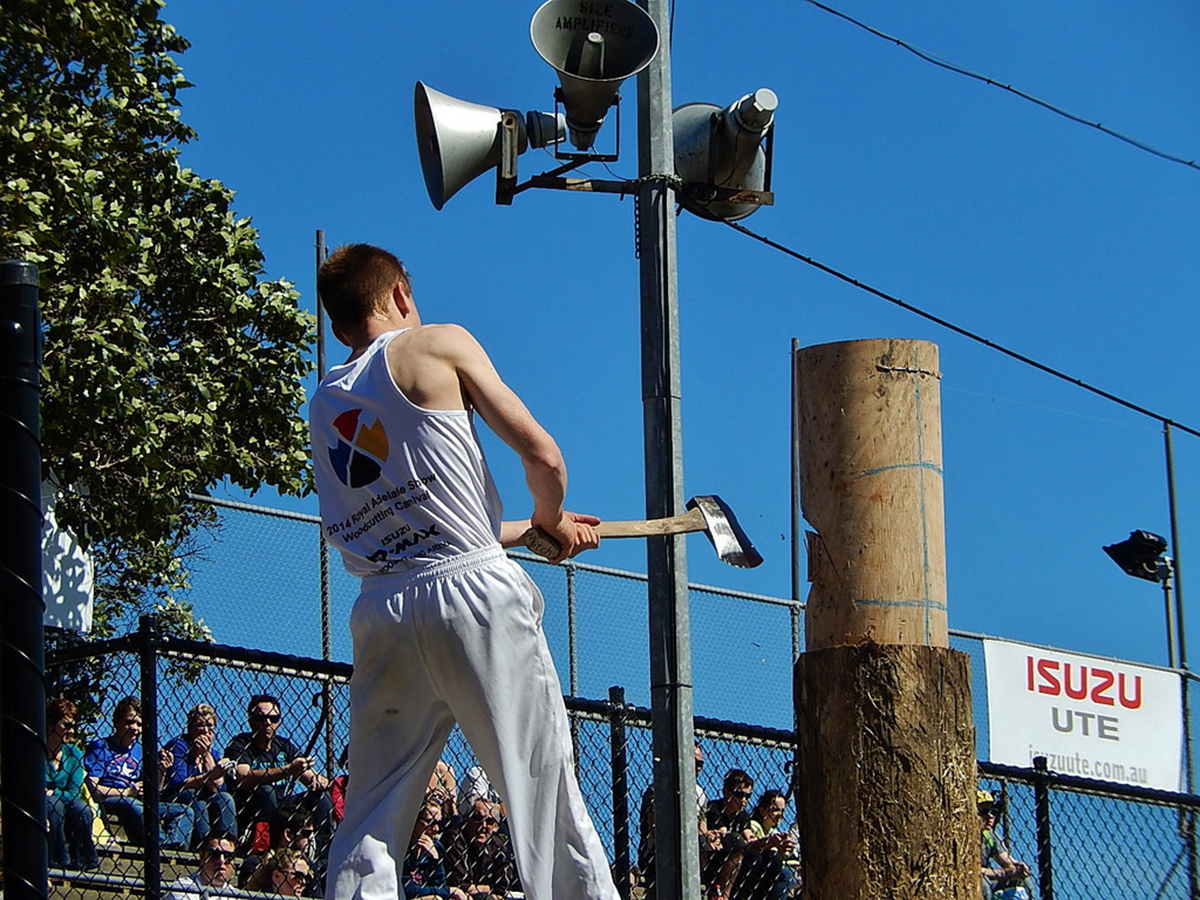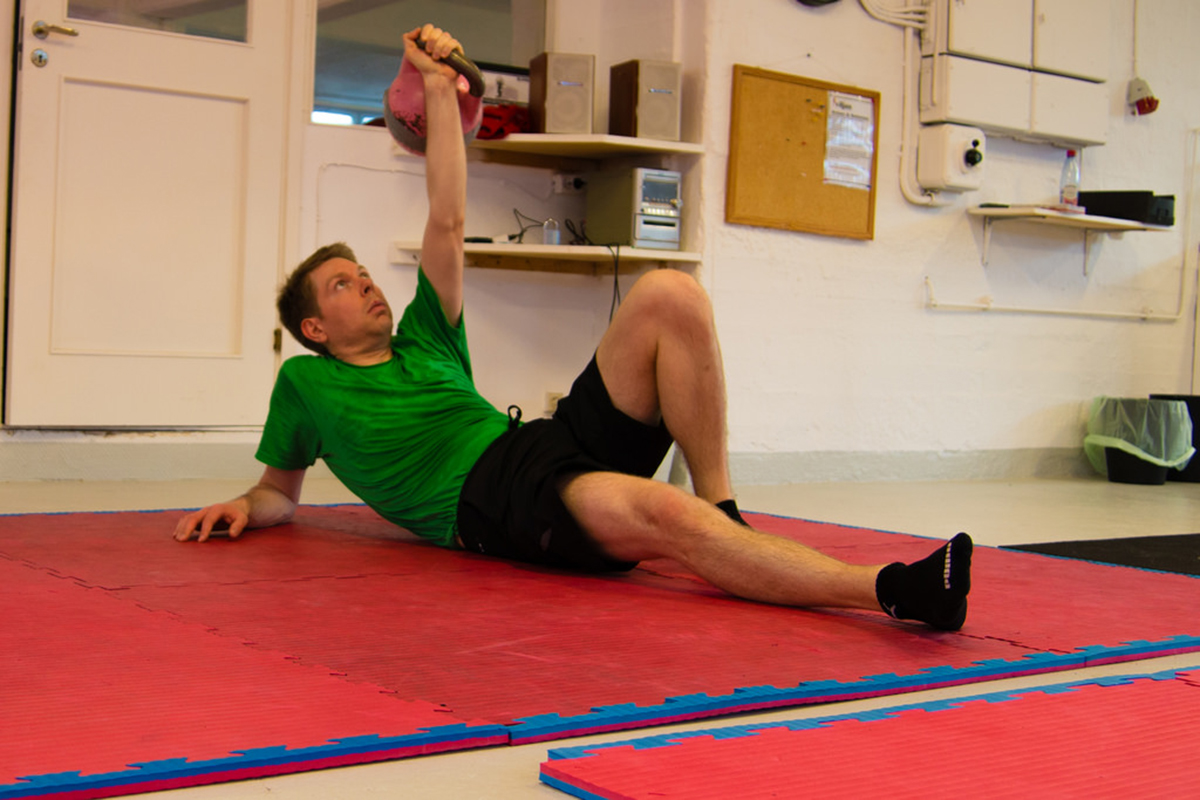If there’s one phrase that exemplifies everything that most of us do in the gym, it’s “straight.” I've written about this before on SteadyHealth, and it's not just because it's a hobbyhorse of mine. We need that straight line strength: building power and strength is easiest done in straight lines and they’re hands-down the most important athletic qualities for most people.
But if we neglect rotation, we’re setting ourselves up for injuries down the line, reducing the amount of muscle we can build, weakening crucial athletic movements and basically leaving a lot on the table.

Why Train For Rotation?
Basically because rotation is such an essential movement pattern. Even a simple, stable movement like sawing a plank of wood on sawhorses involves rotation. Throw a ball or a punch, hit a puck or a golf ball, sweep an opponent with deashi harai or even just turn around in an office chair and rotation is what you’re doing. Yet many of us never train for it. How crazy is that? It’s like doing literally no overhead work (don’t get me started) or never training sprints. When you look at the crossover to real world activities it doesn't make sense.
How Should You Train For Rotation?
Start by developing the freedom of movement to do rotation work. If you couldn’t lift your hands overhead would you go straight to loaded military presses? Of course not; you’d work on mobility first. That’s what we’re going to do.
Finally go to functional rotation. That means rotation exercises chosen not for their crossover to improved rotation but for their effect on the rotational aspect of athletic performance.
First, Though: What Is Rotation?
When your body rotates, your spinal bones move over each other as your body deforms, changing shape to accommodate that twisting movement.
That movement has to be powered by something, and we’d expect to find muscles in place to perform such an important movement — and we’d be right. When you rotate, the main movers are the internal and external obliques, but the glutes and the big fasciae of your low back, as well as your quadratus lomborae and your erectors spinae are all involved.
READ Build a Home Gym for Almost No Money at All with Russian Kettlebells
In fact, a huge amount of mass is involved. We normally find moves like deadlifts and pull-ups recruiting a lot of muscle massa, and that makes sense.They’re the moves we use when it's time to pick something off the floor, for instance. When a move uses a lot of muscle, that’s a good sign that we evolved to do it. Rotation is just such a class of movements.
How to Train for Rotation
Rotation Mobility
We’ll start with passive mobility before moving on to active mobility drills. Using a mixture of both approaches will usually result in the best gains in mobility and strength.
Passive rotation mobility: Lie on the floor with your glutes, shoulder blades and head in contact with the floor, heels on the floor and knees bent. Turn your knees together over to one side as far as they will comfortably go, return them to the start position and repeat on the other side. To make this more effective, try extending the top leg and extending both arms flat to the floor.

Active rotation mobility: Stand with your arms at shoulder height, elbows bent, and turn as far as you can in one direction,then the other.Try to prevent your lower back from “hollowing” — you want to be as upright as possible the whole time. Don’t try to force it, just try to go a little further each time.
Rotation Strength
Diagonal clean: Start with a kettlebell or dumbbell outside your left foot in a hip-width stance. Grasp it in your right hand and clean it to your right shoulder, turning to your right as you do it. Start light: this one requires some skill!
Functional Rotation
Finally, what about some rotational training that’s directly oriented to what you do? Well, assuming you don’t chop down trees, this is probably closest to it. One of the most important roles rotation plays in our actual activities is in running, which requires us to rotate quickly from side to side.
Set up in a hip-width stance with your knees slightly bent and your arms held out in front of you with the palms together. The objective is to turn only as far out as the line of your own shoulder so this is way easier with a training partner. Get them to stand opposite you with their hands shoulder width and level with yours.
Now, rotate quickly from one of the their hands to the other.You’re trying to quickly, not hard, so don't try to hit their hands, just go between them as fast as you can. Make sure your hips don't move! This is a core rotation exercise. And don’t let your arms do the work: keep them straight and move only from the core.
READ Exercise And Physical Training Terms That Simply Don't Make Sense Anymore
If that’s too easy try doing the same drill without touching your partner's hands!
- Photo courtesy of mikecogh via Flickr: www.flickr.com/photos/mikecogh/15381468211
- Photo courtesy of Viljan Träningsklubb via Flickr: www.flickr.com/photos/viljantraningsklubb/15717970415


Your thoughts on this